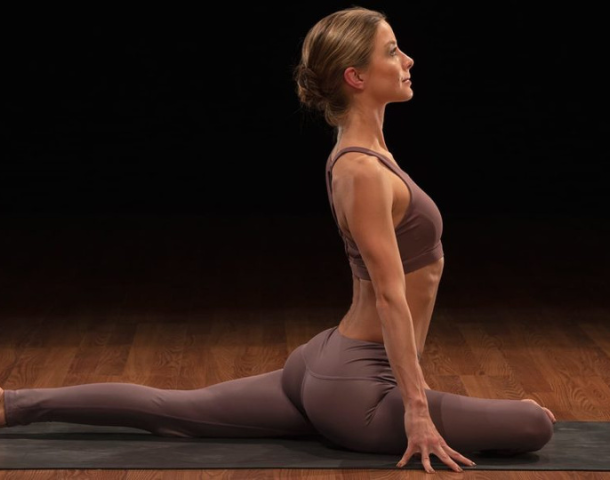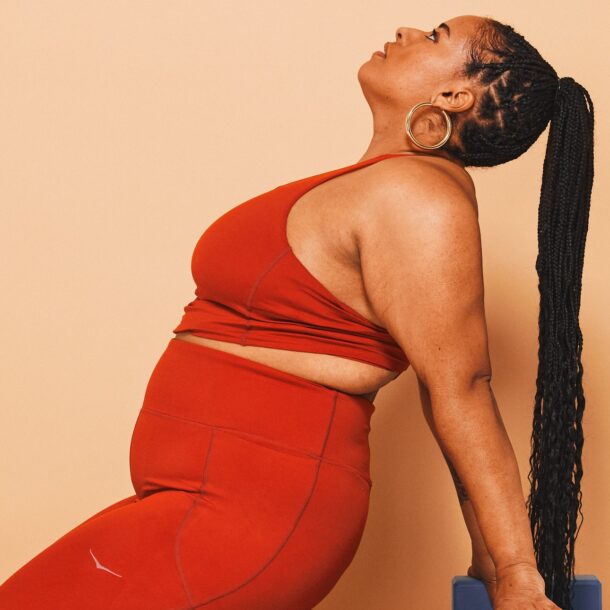
What Is Zone 2 Cardio, and Does It Live Up to All the Hype?
After years of hyping super intense workouts as the best way to exercise, fitfluencers have recently flipped the script. Now, they’re touting easier, chiller zone 2 training as the key to everything from greater endurance to faster paces to even a longer life.
Cardio workouts that feel less hard, but bring greater gains? Who wouldn’t want to make that swap? If you scroll through social, you’ll see a whole bunch of folks trying it—and perhaps an equal number posting their frustration with it. If this is supposed to be easy, why does it feel so damn hard? Am I just in terrible shape?!
Like so many things in the fitness world, the zone 2 cardio movement isn’t exactly black and white. Here’s what to know about these low-key sessions—and how you can make them work for you.
What the hell is zone 2 training, anyway?
When we talk about the “zones,” we’re referring to your heart rate, which is one measurement of exercise intensity—in other words, how hard you’re working. These zones can apply to any type of “cardio” workout (including biking, running, walking, and swimming), and are defined by percentages of your maximum heart rate.
While the gold standard for finding this is an exercise stress test in the lab, you can get a fairly solid estimation in a much-lower-effort way: using a formula, like 220 minus your age, or multiplying your age by 0.7 and subtracting it from 208. So if you’re 35, a general max heart rate would be around 185 beats per minute. Some devices, such as Apple or Garmin watches or other fitness trackers, will also calculate your max heart rates (and thus your zones) based on performance data from your exercise sessions. If you’re part of a program like OrangeTheory and Peloton, those have their own tabulations, too.
According to the most commonly used scale, there are five heart rate zones, ranging from 1 (feels like a super-easy warm-up or everyday activity) to 5 (as hard as you can possibly push). Zone 2, then, falls on the lower end, meaning it involves a lesser level of intensity—about 60 to 70% of your max heart rate, or about 111 to 130 for an average 35-year-old.
Zone 2 is considered an aerobic effort; you’re able to take in enough oxygen to help your body burn the fat it needs to produce the energy to do that work. You’re intentionally exercising, working harder than you would if you were just walking around the house or the grocery store, exercise physiologist, weightlifter, and ultrarunner Alyssa Olenick, PhD, tells SELF. But you’re not pushing so intensely that you slip into anaerobic mode, when your body can’t take in enough oxygen, so it taps into carbs to quickly produce the energy it needs to power you through hard efforts. At that point, you build up compounds like lactate in your blood, which means you begin breathing more heavily and your muscles start feeling heavy or tired.
Think of it as a sustainable effort: “In Zone 2, you should feel comfortable,” like you could go for two hours or longer, Athena Farias, an exercise physiologist, certified personal trainer, and running coach at Get Fit SATX, in San Antonio, tells SELF. (Note: If you’re just getting started with exercise in general or running specifically, the idea of doing anything for hours can sound impossible. This really does mean slowing down a LOT—and also, it’s not something to obsess over right away, which we’ll get to in a moment.)
There are tons of health and performance benefits to zone 2 training.
Zone 2 workouts do indeed bring lots of perks, Dr. Olenick says—she’s even called them the “best-kept secret” of coaches and fitness pros. And their benefits all have to do with the way your cardiovascular and metabolic systems respond over time.
When you regularly exercise at that sustainable level, your muscles, heart, and lungs get comfortable working a bit harder and your body adapts to maximize these changes, Dr. Olenick says. Your heart will become stronger and more efficient at pumping blood through your body. You’ll sprout new capillaries, tiny blood vessels that carry oxygen-rich blood into your muscles. Inside those muscles, your mitochondria—the energy factories that turn oxygen into fuel—will become more plentiful and powerful.
As a result, you’ll build what’s called your aerobic or cardiovascular base, a reserve of fitness that helps you sustain each effort for longer. Thanks to a solid base, every subsequent workout, including ones that take you into higher zones, should feel easier, helping you get more work done more efficiently. In fact, one small study found doing two hours of low-intensity exercise per week improved recovery—and also boosted running performance—after about a month; another found benefits for recovery and endurance when pro soccer players incorporated more lower-intensity training. And you’ll also see several health benefits from these chill sessions, such as a lower risk for insulin resistance and diabetes, heart disease, and stroke, Farias says.
Now, you can reap most of these rewards from any type of aerobic exercise. But the huge benefit of zone 2 is that you can do so without majorly taxing your body, something that can’t be said for high-intensity intervals, Dr. Olenick says. Because zone 2 doesn’t cause a lot of fatigue, you can rack up a lot of hours or miles of these easier efforts each week without less risk of overdoing it (though you should still gradually build up the amount of time you’re working out).
There’s also a psychological benefit to this type of training. You might feel a sense of bliss or a runner’s high, almost like you’re floating. If you’re exercising outside, you can take time to pay attention to the flowers blooming or the trees changing colors (since after all, you’re not busy worrying about the fact that you can’t breathe or your heart might explode). “Zone 2 is soul fuel,” Farias says. “This is your time to have a conversation with your friend or your spouse, enjoy nature, whatever you need to do to decompress.”
But zone 2 training can also stress the hell out of you.
Sometimes, though, this kind of training becomes less about simply moving your body in a chill way and more about making sure you’re hitting your “easy” numbers. One of the biggest frustrations? When doing just about any type of cardio takes your heart rate too high and out of that golden zone, Dr. Olenick says—even, sometimes, if you feel like you’re trying to keep it easy. That’s especially true if you’re new to fitness, or coming back to a routine after some time away.
But even folks who have been working out for a while might struggle with staying in zone 2 at first. That’s especially true if running is your cardio mode of choice: Because it’s a whole-body, high-impact movement, your heart rate naturally tends to spike more than it does doing other forms of cardio, Dr. Olenick says. Merely crossing from running to walking pops many people out of zone 2; if you add a couple neighborhood hills to the mix, chances are even higher. Plus, staying in zone 2 is a skill in itself, she says; if you’re used to exercising at higher intensities, you might have to consciously work on it for a while before your body (and mind) adapt in ways that make it feel more natural.
What’s more, there’s some fluidity to the numbers here. Your maximum heart rate may increase over time as you gain fitness—and, a ton of external variables also influence your heart rate, Farias points out. Heat, stress, caffeine, lack of sleep, dehydration, and the hormonal fluctuations of your menstrual cycle or the menopausal transition can all boost your BPMs. Certain medications—such as some antidepressants and ADHD medications—can raise your heart rate too, while others, such as beta-blockers, lower it. Finally, wrist-based heart rate monitors aren’t always 100% accurate; they can slip and slide when you sweat, and they might have different readings based on your skin color.
Add it all up, and this “easy” way of exercise can become surprisingly fraught: If you find yourself spiking out of zone 2, it’s easy to feel like you’re just not fit enough to exercise “right.” That can be exacerbated by social media and the accompanying comparison game. If someone posts about their hourslong zone 2 training run, and it’s a pace you can barely imagine sustaining for a mile, you might be tempted to toss away your sneakers altogether. But it’s important to keep in mind that everyone’s zone 2 is different, and also always changing. If their post is truthful (and on social media, you have no real way of knowing if it is), they probably had a much different fitness level when they started—plus, like you, they’re still a work in progress.
So what’s the best way to use zone 2 training?
There’s no doubt that the tenet behind zone 2 training—cardio that’s moderate enough not to make you feel gassed—is something you’re going to want to keep near and dear. But you might want to be a little more flexible with its execution.
For one, you may want to consider tossing your watch (at least until you’ve built up more experience with running or your other activity of choice) and going by feel instead. In fact, Farias often recommends not training by heart rate alone, especially for people who are newer to exercise as a whole or running specifically. Instead, she says, use the talk test: If you can carry on a conversation while you’re exercising, that’s usually equivalent to a zone 2 effort, Farias says—meaning, you’re still reaping those moderate-intensity benefits even if you’re technically out of that zone. (If you’re interested, you can track your heart rate alongside that and see what trends you spot, but you shouldn’t feel obligated to get bogged down in the data.)
You also might need to make a conscious effort to bring your intensity down another notch or two. For instance, don’t be afraid to use run-walk intervals, especially at first. In fact, most running coaches recommend starting that way not only because it keeps your heart rate in check, but also because it allows your muscles, tendons, ligaments, and bones time to adapt to the impact of pounding against the ground. Another option is to alternate days of running with incline walks, biking, or rowing, where it’s easier to keep your effort level and heart rate in check.
Once you have the “feel” of moderate intensity down, good—get ready to refer back to it often. To get the most bang for your exercise buck, your workout program should be weighted heavily in favor of these easy days. In fact, many athletes follow plans that use something called polarized training, aiming for about 80 or 90% of workouts at an easy or zone 2 level and 10 to 20 percent or so in higher, harder zones like 4 and 5.
This mix is good for body and mind: If all you do is push hard day after day, you’re likely to get injured, burned out, or both, Farias says. On the flip side, if you only ever do zone 2, you miss out on some of the added benefits of higher-intensity exercise, some of which may be even more important to women as they age—for example, training your fast-twitch muscle fibers and increasing your ability to withstand fatigue. The secret of polarized training is that keeping the majority of your workouts super-easy can help you push harder when it counts and recover better and more quickly afterward.
One thing, though: Before you start worrying about adding in hard days to your sched, you should focus more on feeling comfortable with your moderate routines first. For instance, stick to your zone 2—whether it’s “official” zone 2, or simply a workout that passes the talk test—until you can run for about an hour consistently, or until you’ve built up to about two and a half hours total of chill cardio per week. (Even then, if you’re a runner, you still might have to go back to run-walk intervals to get some of your runs back to zone 2, Dr. Olenick says—and that’s completely fine!).
Give yourself some time—and grace—to let it feel “easy.”
Doing any kind of cardio for an extended period of time is going to feel tough from the get-go: After all, that’s why people train for races and don’t just show up to the start line and let ‘er rip. So give yourself grace; it takes time and practice to exert just the right amount of effort to make it feel doable.
All of this can feel overwhelming when you’re first getting started, especially if you’re primarily concerned with improving your health versus any specific endurance goals, or if you just want to get in some cardio to complement your lifting. Dr. Olenick’s advice: Don’t stress out about zones at first. It’s a lot more important to find activities you enjoy and do them regularly. “Zone 2 and harder intensity exercise are both important—but any cardio you do is going to be beneficial to your health and fitness,” Dr. Olenick says. “Focus on getting started, and getting consistent, and getting more in. Then worry about refining later.”
It can take a while—a year or two—to make the types of major gains in cardiovascular fitness that make zone 2 feel more natural, she says. After all, you can’t grow capillaries or mitochondria overnight. “These are all slow processes that take time,” she says. “But every cardio session is a small vote toward this.” To stay motivated in the meantime, you can keep tabs on all the other ways your health and fitness are improving—say, that your blood pressure or blood glucose drop, you can keep up each cardio session for longer, or your daily activities feel easier. Don’t worry: This is all happening in the background, even if it’s not exactly visible on the face of your smartwatch.
Related:
Related Articles
2023 Healmyselfnow @ All Rights Reserved


